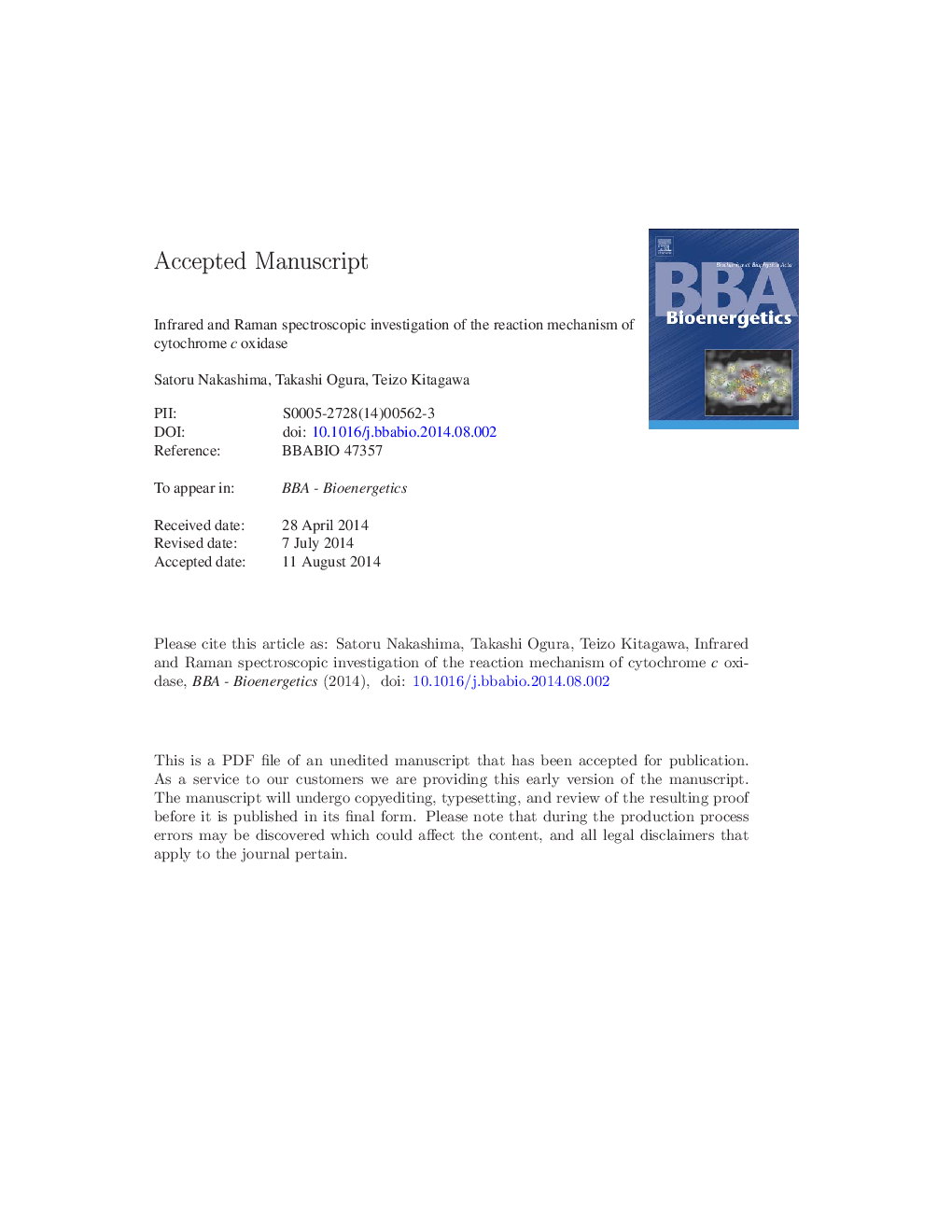| Article ID | Journal | Published Year | Pages | File Type |
|---|---|---|---|---|
| 1942147 | Biochimica et Biophysica Acta (BBA) - Bioenergetics | 2015 | 42 Pages |
Abstract
Recent progress in studies on the proton-pumping and O2 reduction mechanisms of cytochrome c oxidase (CcO) elucidated by infrared (IR) and resonance Raman (rR) spectroscopy, is reviewed. CcO is the terminal enzyme of the respiratory chain and its O2 reduction reaction is coupled with H+ pumping activity across the inner mitochondrial membrane. The former is catalyzed by heme a3 and its mechanism has been determined using a rR technique, while the latter used the protein moiety and has been investigated with an IR technique. The number of H+ relative to eâ transferred in the reaction is 1:1, and their coupling is presumably performed by heme a and nearby residues. To perform this function, different parts of the protein need to cooperate with each other spontaneously and sequentially. It is the purpose of this article to describe the structural details on the coupling on the basis of the vibrational spectra of certain specified residues and chromophores involved in the reaction. Recent developments in time-resolved IR and Raman technology concomitant with protein manipulation methods have yielded profound insights into such structural changes. In particular, the new IR techniques that yielded the breakthrough are reviewed and assessed in detail. This article is part of a Special Issue entitled: Vibrational spectroscopies and bioenergetic systems.
Keywords
Related Topics
Life Sciences
Agricultural and Biological Sciences
Plant Science
Authors
Satoru Nakashima, Takashi Ogura, Teizo Kitagawa,
